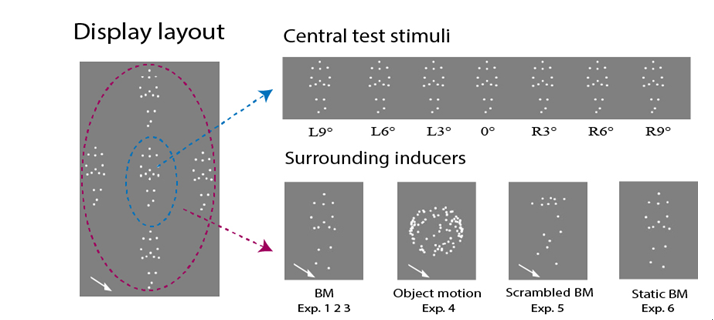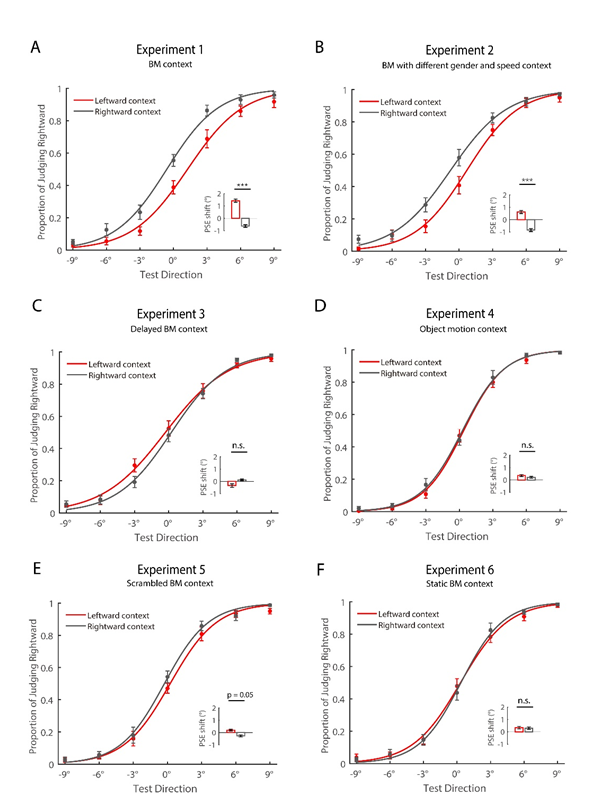
Human perception is not always a faithful representation of the physical world, as it can be significantly biased by the surrounding context. For example, the orientation of a vertical grating is perceived away from that of the surrounding gratings, and a sofa embedded in a living-room setting is easier to identify than the same sofa in an African plains background. The contextual effect, although taking into consideration the low-level physical properties or the semantic association between objects, has so far been rarely explored in the social domain.
Social interaction is ubiquitous in daily lives, as when a group of pedestrians always walks collectively. People perceive these intangible social bonds almost effortlessly. How do these implicitly perceived social bonds impinge on perceptual processes?
In a recent study, Prof. YUAN Xiangyong, Prof. JIANG Yi and their colleagues from the Institute of Psychology of the Chinese Academy of Sciences have systematically manipulated the movement alignment of biological entities and explored whether perceived social bonds that implicitly serve as a contextual factor could bias human perception about the movement of one individual among the group to which he or she belongs.
Through six experiments, they tested how the judgment of the walking direction of a central walker was affected by surrounding walkers (point-light biological motion) who walked leftward and rightward, respectively.

Fig. 1. Visual stimuli used in the current study. (Image by CHENG Yuhui)
The researchers found that the perceived direction of the central walker was attracted toward the direction of the surrounding walkers. The observed contextual attraction effect occurred even when the surrounding walkers differed from the central walker in gender and walking speed, but disappeared when they were asynchronously presented or replaced by inanimate motion.
Strikingly, this contextual attraction effect partially persisted in the context of local motion rather than static figures.
Taken together, these findings verify that the perception of biological behavior highly relies on the social context: humans tend to perceive the direction of a central walker as aligning with the direction of surrounding walkers. Biological motion walking direction should not be simply categorized as a low-level visual feature but essentially reflects the social bonds between group members.
In particular, the agents who walk in the same direction are often seen as collective motion, which reflects intangible social relationships among people.
Therefore, the visual system is prone to perceptually cohere multiple interactive individuals into a unified, homogeneous group, leading to a contextual attraction effect. These findings lend support to the distinctiveness of perceived social bonds on contextual modulation.
In addition, this work implies an evolutionary adaptive mechanism that favors implicit perceptual biases in accordance with social alignment and suggests that human perceptual system is intimately associated with higher-level social cognition.
This study entitled "Following Other People’s Footsteps: A Contextual-Attraction Effect Induced by Biological Motion" has been published online on August 19 in Psychological Science.

Fig. 2. Results of the six experiments. (Image by CHENG Yuhui)

86-10-68597521 (day)
86-10-68597289 (night)

52 Sanlihe Rd., Xicheng District,
Beijing, China (100864)

